NSTDA using medical and public health clusters is supporting Thai researchers to invent and develop medical diagnosis kits. Now a product has already been successfully developed and can be used in actual diagnosis efficiently and accurately.
• Simple Test Kit for Alpha Thalassemia Carrier Screening
The classification of alpha thalassemia carrier patients is not easy, so the medical profession needs the invention and development of a test kit that is rapid, cost-effective, and helps avoid complicated patient diagnosis and classification procedures.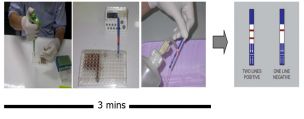
Acknowledging the need, a research team from the Biomedical Technology Research Unit of the Faculty of Associated Medical Sciences, Chiang Mai University, has studied and developed a simple test kit which uses a solution or an antibody which is distinct to haemoglobin Bart's found in an alpha thalassemia carrier’s blood to detect the haemoglobin.
This test kit uses only 3 minutes to perform a single test. It is convenient to use, inexpensive and is 99% accurate. Now the invention has been passed on to private companies for commercial manufacturing.
• White Blood Cell Count Solution for General Automatic Blood Cell Counters
The method of counting CD4 cells is used to identify a patient’s HIV/AIDS immune status which helps to predict the severity of their illness and determine the amount of anti-viral medication to be given to the patient. Currently, this is done using a flow cytometry machine, which is an expensive and complicated practice and is available only at certain hospitals.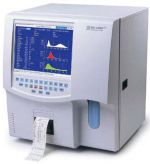
Acknowledging the need, a research team from the Faculty of Associated Medical Sciences, Chiang Mai University, has developed a new invention for white blood cell testing. The CD4 white blood cell test kit uses a solution to test a patient’s blood sample. The testing procedure no longer requires a flow cytometry machine, but requires only an automatic blood cell analyzer which is normally used in every hospital.
The test kit gives accurate test results. It takes only one hour to perform each test and it is inexpensive. Now the invention has been passed on to private companies for commercial manufacturing.
• Conjugate Solution for Rabies Diagnosis
Researchers from Queen Saovabha Memorial Institute of the Thai Red Cross Society have studied the procedures of conjugate solution preparation for rabies diagnosis. The viral disease is severe and invariably fatal and it has caused the loss of over 60,000 people’s lives each year. The standard procedure used to diagnose an animal with the disease is called the immuno-fluorescent detection technique. Labeling the conjugate solution with a fluorochrome, the areas of the brain where there are rabies viruses will illuminate under a fluorescent microscope once it is dyed in the solution. The sensitivity and the specification ability of detection depend mostly on the quality of the conjugate solution.
Researchers from Queen Saovabha Memorial Institute of the Thai Red Cross Society have studied the procedures of conjugate solution preparation from rabbits stimulated by rabies’ nucleoproteins by separating the globulin protein from the serum and labeling it with a label with fluorescein isothiocynate. The solution has been tested by five Rabies Autopsy Units in Thailand and all have confirmed the same results as those tested by the samples dyed in commercial solutions attained from outside the country.
Currently, a private company is allowed to use the rights of this research to manufacture and distribute the invention for commercial purposes domestically and in foreign countries.
• Bio-Sensor Bird Flu Diagnosis Kit
One of the successful bird flu preventive invention research and development projects that NSTDA has given its support to is the ‘Development of the Bio-Sensor Principle Bird Flu Diagnosis Kit’ which is effective and 100 times more accurate than the current method. Testing is easy and the results can be attained in 15 minutes. Also, it can be used to test animals that have not shown any symptoms.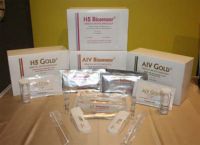
The new bird flu diagnosis kit is an extension of research on the monoclonal antibody which is used to diagnose several kinds of flu by developing the antibody into an H5 bird flu test kit. For animal tests, the kit uses coated nano magnetic particles combined with antibodies on the test kit stripe to test the intensity of the magnetic field, which increases when the antigen of the bird flu virus reacts with the antibody that detects it. One test kit includes a testing stripe and a set of H5 bird flu interception solution.
Researchers have found that a bio-sensor test kit takes only 15 minutes to test a sample while its accuracy is higher than currently-used immuno-chromatography, which takes more time and the result analysis can be done with the naked eye. Moreover, such tests require a greater amount of bird flu virus sample in order to perform an accurate diagnosis, so it is more appropriate to perform such diagnoses on animals with visible bird flu symptoms. The Bio-sensor test kit, on the other hand, can identify that an animal has bird flu even though the sample taken from it contains 100 times smaller amount of the bird flu virus, which also favors early infection diagnosis.
Now, this new bio-sensor principle bird flu diagnosis kit has a patent pending and later it will be registered with international organizations. The invention will be passed on to Innova Biotechnology Co., Ltd. who will manufacture and distribute the test kits under the names of INNOVA Platinum® H5 Biosensor and AIV Biosensor, the latter is used to detect the H5 and avian influenza A (AIV). These test kits will be the world’s first bio-sensor bird flu diagnosis kits.
• Thai Red Blood Cells Test Kit
Testing for a reaction between the antigen and the antibody of red blood cells is the basic test in the blood bank laboratory. The development of the Gel Test technique will help to avoid errors that occur from identifying results using a sample-shaking technique of test tubes. The results can also be re-read anytime by anyone.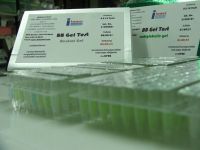
Researchers from Khon Kaen University successfully developed the “Test Kit for Antigen-Antibody’s Reaction on Red Blood Cells” by producing three different Microtube Gel Tests: Neutral Gel, Antiglobulin Gel and Specific Gel, which can be used to test for the reaction between the antibody and the antigen on the surface of red blood cells as effectively as using test tubes. Additionally, the test kits come in the forms of microtube and microstrip gel test, which can test 1-12 samples at a time. The microstrip can be assembled into a microplate to use with an 8 or 12 channel pipette for convenient use. It saves time and money, uses fewer staff, and helps decrease the number of errors.
The test kit is appropriate for daily use, especially in huge laboratories that have to handle many samples each day. The trial kits have also been used at the central blood bank of Srinagarind Hospital, Khon Kaen province and received satisfactory feedback. The research team has already filed for the product’s patent.
• Integrated Influenza Test Kit
The collected data since the spread of the new swine flu 2009 show that the A H1N1 influenza virus that caused the spread has resisted drug action and is now unresponsive to treatment. Consequently, Thailand needs to prepare diagnosis procedures to be able to identify the breed of the virus in a patient and inspect the cause of any unresponsive treatment in order to help doctors decide which type of medication is the most appropriate for each patient to regain control on the spread.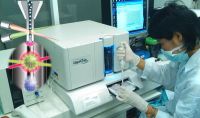
Researchers from the Faculty of Medicine, Ramathibodi Hospital, Mahidol University, have developed a new “All-in-One” integrated influenza test kit to be used with the pyrosequencer machine. The same procedure is recommended by the World Health Organisation (WHO) for testing the unresponsiveness of amantadine and oseltamivir and allows doctors to perform tests on several samples at once. Helping doctors identify the activation time of amantadine and oseltamivir, and the time taken until the virus becomes unresponsive to medication, it can identify whether a patient is infected by H5N1 bird flu, seasonal influenza H1N1, the new swine flu 2009, or H1N12009 within 4-6 hours after receiving a sample. Performing a test costs around Bht. 500 (excluding management and instrument expenses), which is about the same price as a real-time PCR kit.
This invention is now available for actual use at Ramathibodi Hospital and is ready to be passed on to the laboratories concerned.
